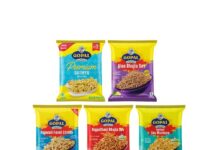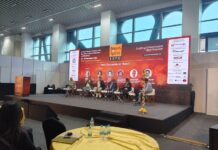Chief minister Pramod Sawant has recently announced the roadmap to make Goa Self-sufficient in the agriculture and allied sectors. Sawant said that state government departments would work in coordination with the ICAR-CCARI and other central government institutions. The chief minister was speaking at a press conference held at ICAR-CCARI, Old Goa. Deputy chief minister and agriculture minister Chandrakant Kavalekar, ICAR-CCARI director Eknath Chakurkar were also present.
The chief minister conducted a series of meetings with ICAR-CCARI and state government officials to prepare a roadmap for executing strategies for improving production, productivity, value chain, mechanization in agriculture, animal husbandry, and fisheries sector of Goa State. The proposed action plan for Goa state includes mainly productivity improvement in major crops like paddy, cashew, and coconut, diversification in agriculture, creation of integrated farming system models, mechanization, value addition, and policy reforms in the agriculture sector.
The objective of these meetings is to make Goa self-sufficient, create a brand of ‘Goa’ on the global platform. By implementing all central Government schemes, the Government will achieve the target of doubling the farmer’s income by 2022, he said.
To create a ‘Goan Brand’ of local products, the Government has planned to set up organic farming clusters and start 12 Farmer Producer Organizations state-wide, informed the chief minister. Micro Irrigation Scheme will be developed under PM-Kisan Yojana. ‘Integrated Farming’ will double the income of farmers. This will attract more youth towards agriculture and allied sectors, said Sawant.
The first state-level coordination committee meeting for doubling the farmer’s income by 2022 was conducted on 23 March 2017 at ICAR-CCARI, Goa. It is estimated in the 70th round of NSSO that the average income of farmers in Goa is Rs 91,098, of which Rs 16,893 is through farming, Rs 15,097 is through is dairying, Rs 12,243 through non-farm activities, and Rs 46,865 through wage labor and salary.
IndiFoodBev — authentic, impactful and influential
An English-language food and beverage processing and packaging industry B2B platform in print and web, IndiFoodBev is in its third year of publication. It is said that the Indian food and beverage industries represent approximately US$ 900 billion in revenues which implies more than 20% of the country’s GDP. Eliminating the wastage on the farmside can help to deliver more protein to a higher number of the population apart from generating sizable exports. The savings in soil, seeds, water, fertilizer, energy and ultimately food and nutrition could be the most immense contribution that country is poised to make to the moderation of climate change.
To improve your marketing and grow sales to the food and beverage processing and packaging industry, talk to us. Our research and consulting company IppStar [www.ippstar.org] can assess your potential and addressable markets in light of the competition. We can discuss marketing, communication, and sales strategies for market entry and growth.
Suppliers and service providers with a strategy and budget for targeted marketing can discuss using our hybrid print, web, video, and social media channels to create brand recognition linked to market relevance. Our technical writers are ready to meet you and your customers for content.
The second largest producer of fruit and vegetables in the world is continuously expanding processing capacities and delivery systems with appropriate innovative technologies. We cover product and consumer trends, nutrition, processing, research, equipment and packaging from farm to thali. Get our 2025 media kit and recalibrate your role in this dynamic market. Enhance your visibility and relevance to existing markets and turn potential customers into conversations. Ask for a sample copy of our bi-monthly in print or our weekly IndiFoodBev eZine each Wednesday.
For editorial info@ippgroup.in — for advertisement ads1@ippgroup.in and for subscriptions subscription@ippgroup.in
Naresh Khanna – 10 February 2025
Subscribe Now











